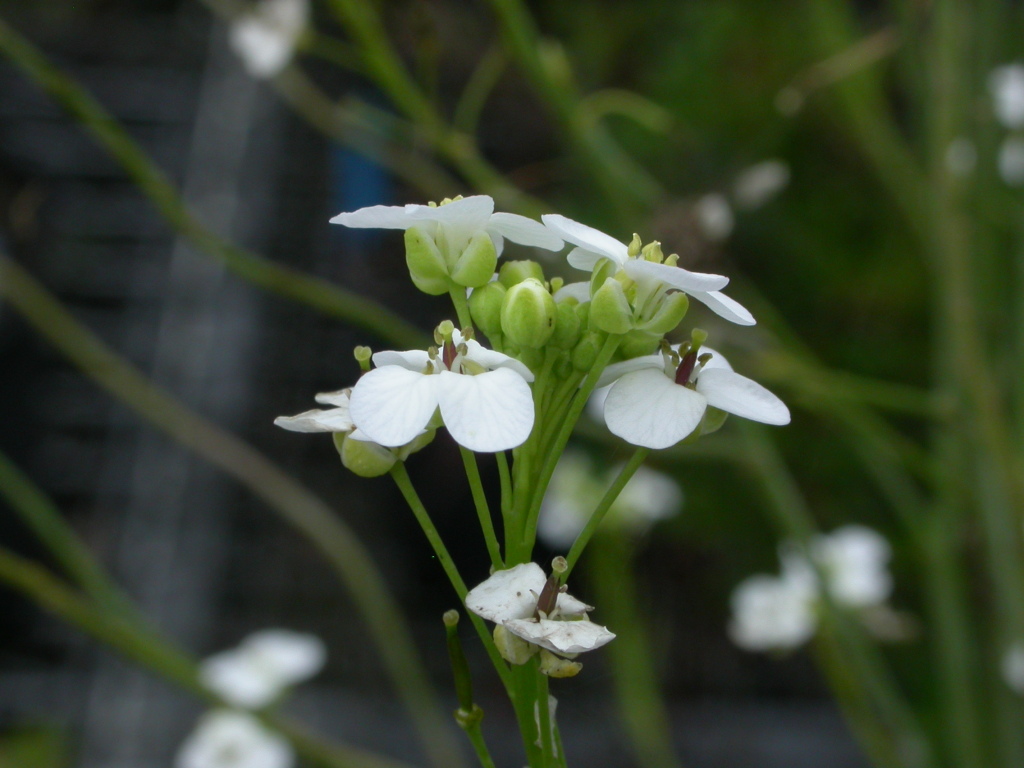Irenepharsus magicus
HewsonErect annual or biennial, 60–90(–180) cm high; stems glabrous, freely branching. Leaves sparsely covered in shortly stalked, usually branched hairs; basal leaves not persistent, narrowly ovate, lanceolate or elliptic, tapering to petiole, toothed; upper-stem leaves similar, to 15 cm long, reducing. Sepals 2–3 mm long; petals c. 5 mm long. Fruit erect, 10–25 mm long (excluding style), 1.5–2 mm wide, glabrous; style c. 1–2 mm long; valves convex; pedicels erect to spreading, 5–11 mm long; seeds 1.2–1.5 mm long. Flowers Dec.–Apr.
EGU, HSF, MonT, VAlp. Also NSW. Extremely restricted in Victoria, and known only montane woodland to subalpine forest sites in the Omeo area (particularly on the Nunniong Plateau), but locally common after disturbance from fire or timber-harvesting.
Differs from most other Brassicaceae with beakless fruits in having branched hairs, seeds in 1 (or 2 indistinct) rows and small flowers with white petals. It is similar to the introduced Arabidopsis but in that species the midvein of the fruit is prominent all the way to the apex and the seeds are c. 0.5 mm long.
Entwisle, T.J. (1996). Brassicaceae. In: Walsh, N.G.; Entwisle, T.J., Flora of Victoria Vol. 3, Dicotyledons Winteraceae to Myrtaceae, pp. 399–459. Inkata Press, Melbourne.
 Spinning
Spinning

